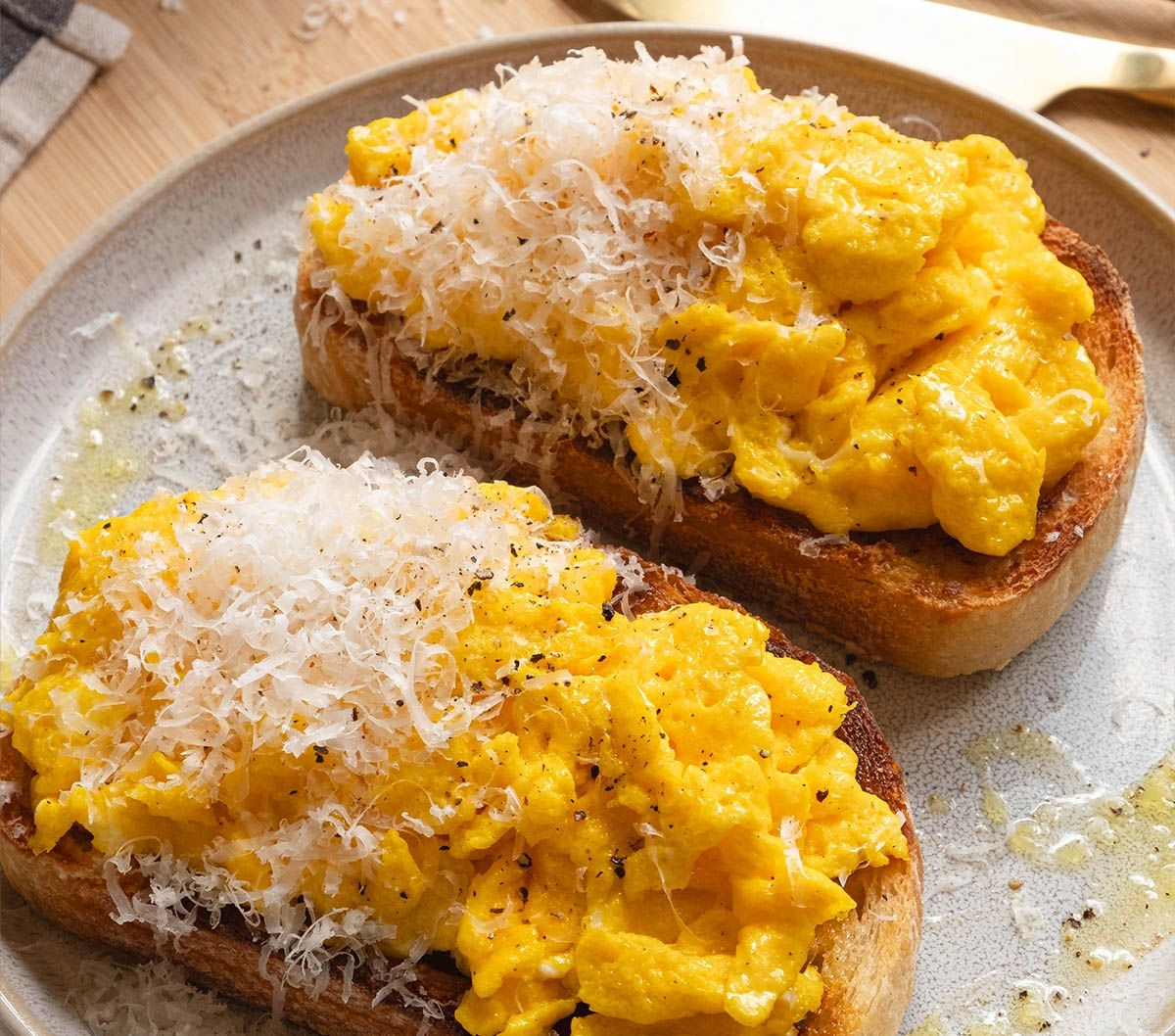Cacio e Pepe Scrambled Eggs
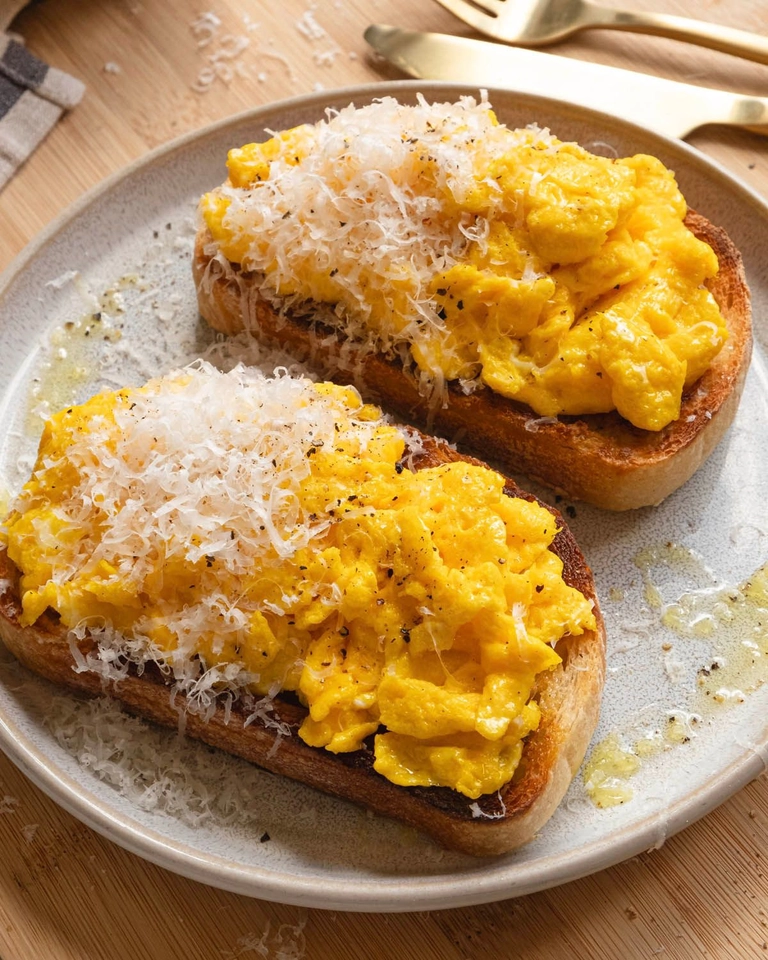
The rich flavours of classic Cacio e Pepe meet silky, soft and fluffy scrambled eggs in the ultimate easy egg breakfast recipe. These cacio e pepe scrambled eggs are creamy, decadent, and ready in a couple of minutes, perfect when you want something simple and indulgent.
Cacio e Pepe Scrambled Eggs
Cacio e Pepe Scrambled Eggs
Cacio e Pepe Scrambled Eggs
Everyone needs a go-to scrambled eggs recipe, ready to pull out for breakfast, brunch, or even a simple girl dinner. This version takes humble scrambled eggs up a notch with a generous helping of parmesan cheese and a bold kick of freshly cracked pepper.
Like your cup of tea, the way you like your scrambled eggs is personal. If you’re already set in your scramble ways, think of this as more of a flavour upgrade than a technique overhaul. But if you’re new to the scrambled egg game and want a foolproof recipe, this is your new go-to.
What is Cacio e Pepe
If you’ve missed the trend, Cacio e Pepe is a classic Roman pasta, combining parmesan or pecorino romano with a good hit of black pepper, that’s become super popular, and the spin off recipes like my scrambled eggs, and this epic one from Justine Snacks are a good time.
Cooking tips for Cacio e pepe scrambled eggs
- Let the butter brown slightly—it adds a nutty depth of flavour.
- Gently push and fold the eggs with a spatula. Stirring too quickly will break them up and ruin the soft, silky texture.
- Don’t overcook—scrambled eggs should be creamy, not spongy.
Switch it up
- Add to a toasted croissant instead of sourdough
- Have it bread free with some baby spinach or asparagus
- Add some chilli / red pepper flakes for a little kick of spice
More egg recipes
If you love an egg breakfast, my Jammy eggs and feta on toast is delicious and flavour packed.
Scrambled eggs are best enjoyed fresh, while they’re still creamy and soft. If you have leftovers, store them in an airtight container in the fridge for up to 3 days. To reheat, warm them gently on the stovetop with a splash of milk or cream, or microwave in very short bursts, stirring in between.
Freezing scrambled eggs isn’t ideal. While technically safe, the texture changes once thawed—they often turn watery and rubbery. If you do want to freeze them (for meal prep, for example), undercook the eggs slightly so they don’t dry out when reheated. Store in a freezer-safe container for up to 1 month, and thaw overnight in the fridge before reheating.
Ingredients and substitutions
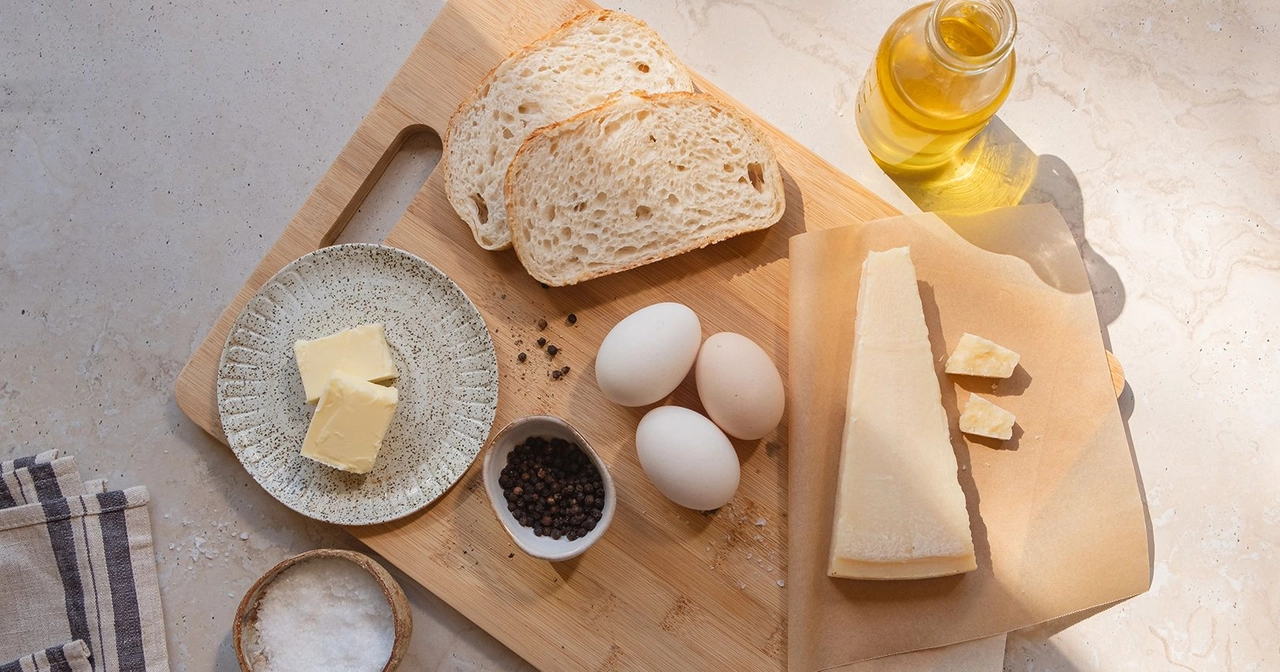
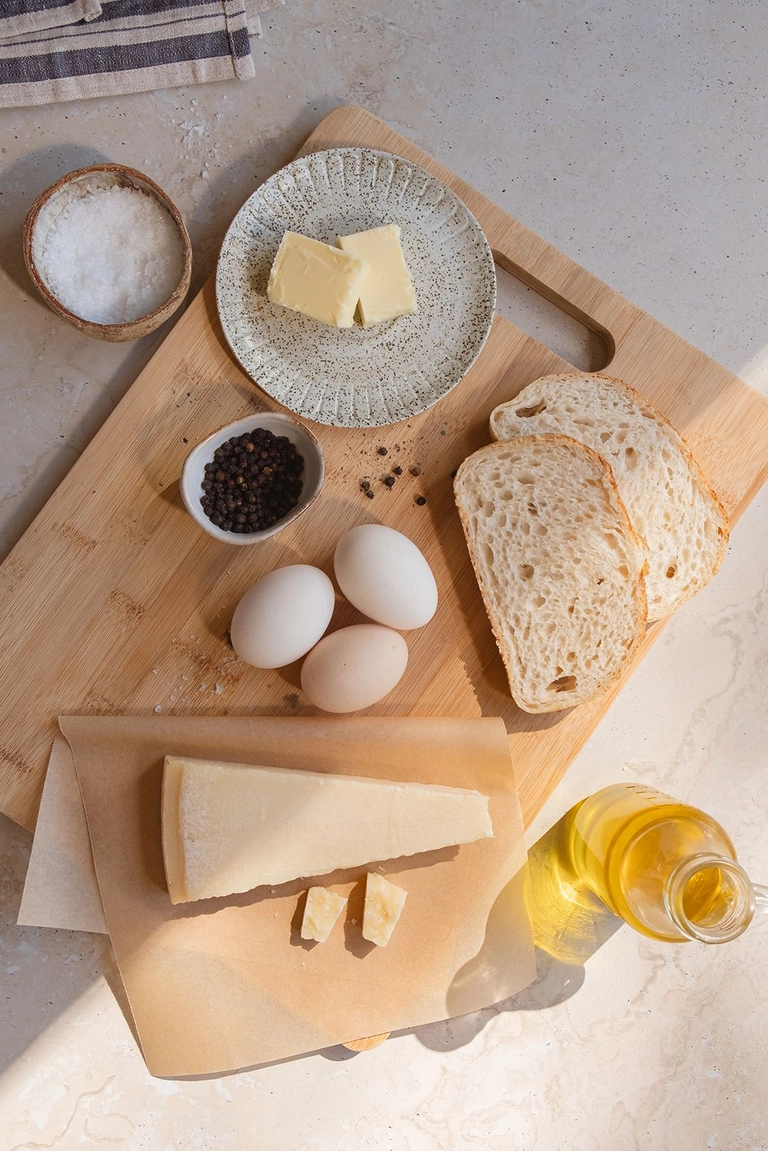
How to make it - step by step!
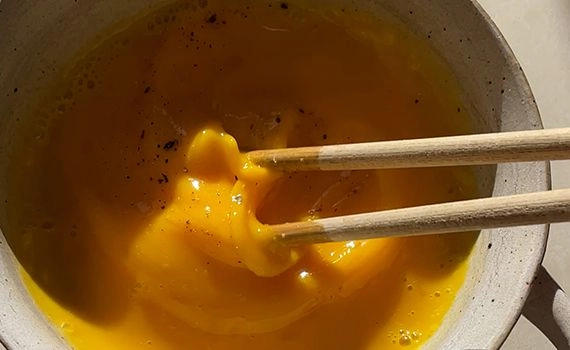
Whisk the eggs until smooth, then season with a pinch of salt and pepper.
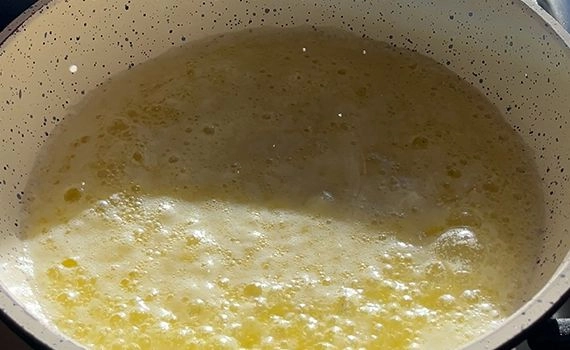
Melt butter in a pan over medium heat, allowing it to brown slightly.
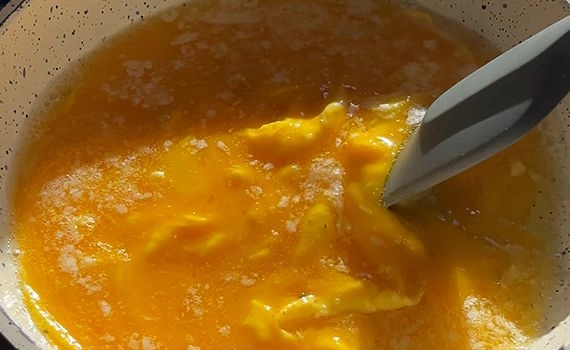
Add the egg mixture. Let it sit for a few seconds, then gently push in from the sides with a spatula to form silky folds.

Continue moving the eggs gently until just set and creamy.
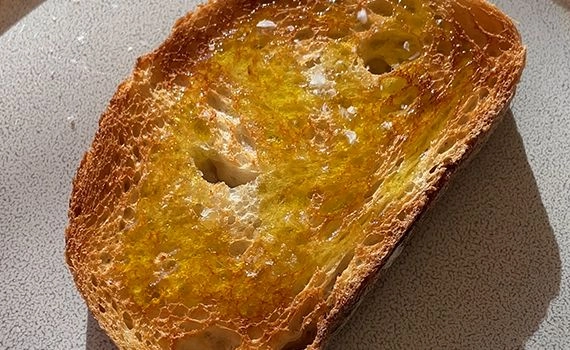
Drizzle olive oil over the toasted sourdough and season with a small pinch of salt.
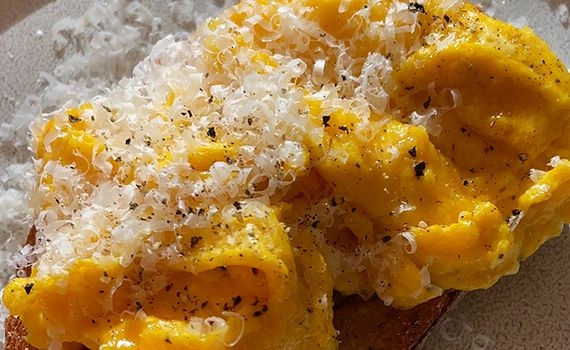
Divide the scrambled eggs between the toast, then top with parmesan or pecorino and extra black pepper.
Watch the how to video
Watch the how to video
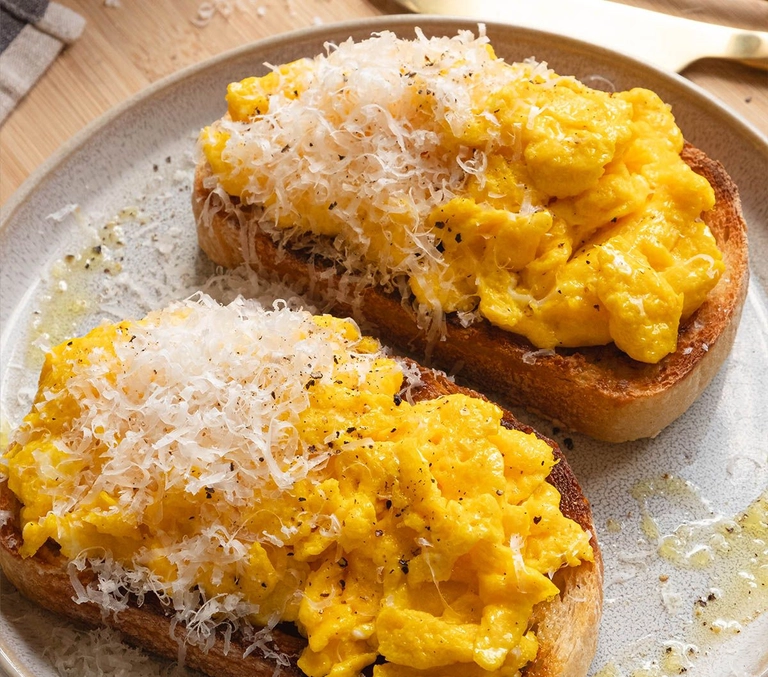
Cacio e Pepe Scrambled Eggs
- 3 large eggs
- 2 tbsp butter
- ¼ tsp salt
- 1/2 tsp cracked black pepper (or as much as you like)
- 1/3 cup grated parmesan or pecorino cheese
- 1 tsp olive oil
- 2 pieces of toasted sourdough
- Whisk the eggs until smooth, then season with a pinch of salt and pepper.
- Melt butter in a pan over medium heat, allowing it to brown slightly.
- Add the egg mixture. Let it sit for a few seconds, then gently push in from the sides with a spatula to form silky folds.
- Continue moving the eggs gently until just set and creamy.
- Drizzle olive oil over the toasted sourdough and season with a small pinch of salt.
- Divide the scrambled eggs between the toast, then top with parmesan or pecorino and extra black pepper.
